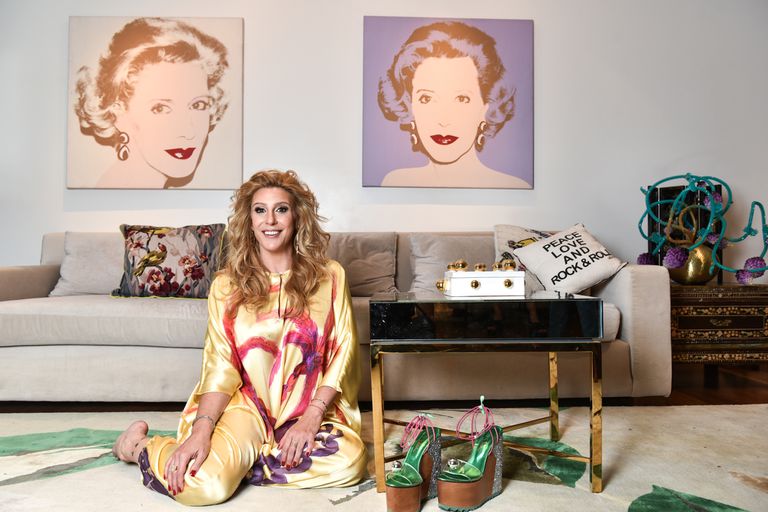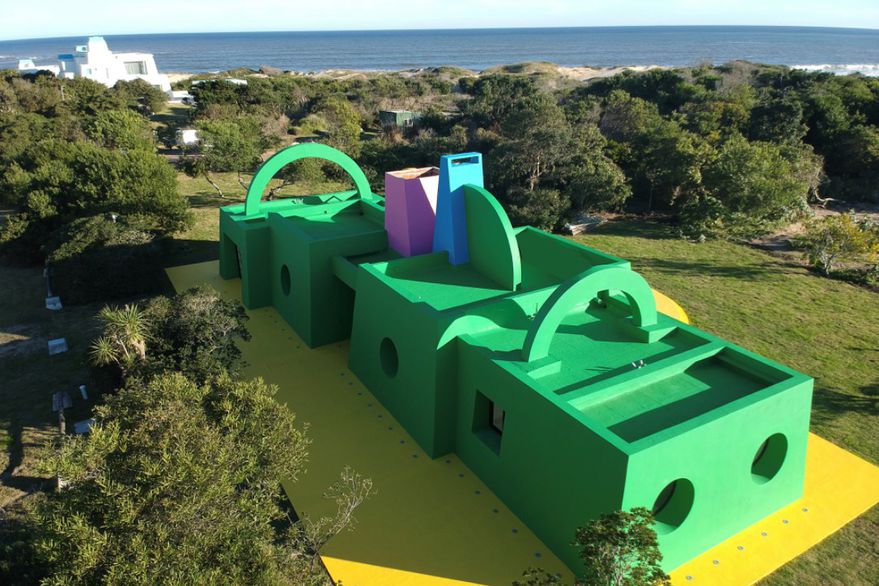RIO DE JANEIRO, BRAZIL – Plastic artist, astrologer, and businesswoman. Amalia Amoedo is the youngest of the three granddaughters of the late Amalia Lacroze de Fortabat, one of the richest women in Argentina. She discovered her passion for art and painting.
Amalia Amoedo is the daughter of Inés de la Fuente, the only daughter of Amalia Lacroze de Fortabat and Julio Amoedo, both deceased and heiress to one of the enormous fortunes in Argentina.
Read also: Check out our coverage on Uruguay
“I love being an ambassador for the arts. Wherever I am, I will talk about these artists,” Amalia Amoedo enthusiastically tells La Nación newspaper from José Ignacio, a fishing village in Uruguay, where she has just launched a residency for Latin American artists.

Starting next November, artists selected by a prestigious international jury will be invited to work in a space designed by Edgardo Giménez. They will then participate in a group exhibition in Miami as part of Art Basel week.
The collector and former president of arteBA founded the Fundación Ama Amoedo Residencia Artística (FAARA) to “permanently and sustainably promote Latin American art’s ecosystem and increase its visibility in the world.” According to the granddaughter of Amalita Fortabat, this is a way to “formalize” the actions related to the international art promotion it has been carrying out for more than two decades.
The program, sponsored by the foundation, offers six artists from the region “a space for research, work and creative reflection in the form of a six-week retreat in nature” in José Ignacio. Away from their daily lives, they will receive a stipend to support their creative process and participate in a program of activities led by Violeta Mansilla.
Two artists will live for six weeks in Casa Neptuna, a 139 m2 building in the middle of the forest and near the sea on the outskirts of Punta del Este. Giménez designed it from his home in Punta Indio during the pandemic, understanding it as “a place of freedom where you have the right to be creative.”
While it stands out from the outside with its distinctive pop colors, inside, it has large studios and private rooms painted in neutral white to create “a bright and peaceful atmosphere.” The name chosen by Amoedo, Neptuna, is a feminine variant of the Roman god of the seas.
“It’s the first house I’ve built by phone,” said Giménez, who is currently in Buenos Aires, where he is preparing a solo exhibition at the National Museum of Decorative Arts for next year.
“The original house was terrible, it wasn’t fun at all. It occurred to me to put a little fantasy in it because that’s what the planet lacks,” added the artist and author of the famous “Casa Azul” by Jorge and Marta Romero Brest in City Bell, who directed this work for months through video phone calls with Mansilla. He also stressed the importance that “people who have great economic power remember to help others.”
In addition to being an artist and patron, Amoedo is a member of the Acquisitions Committee of the International Latin American Circle of the Centre Pompidou, the Latin American and Caribbean Art Committee of MoMA, the International Committee of the ArteBA Foundation, the Association of Friends of Modern Art and the Advisory Board of the Americas Society.
Since last year, she has lived in Uruguay and plans to promote a similar project in Villa La Angostura.

To promote this initiative, a selection committee was convened that includes Magalí Arriola, director of the Museo Tamayo in Mexico City, Inti Guerrero, artistic director of Bellas Artes Projects in the Philippines and lecturer at the KASK program for curatorial studies in Belgium, and Aimé Iglesias Lukin, director of the Americas Society in New York.
The artists selected for the first edition were Marcela Sinclair (1972, Argentina) and Sofía Gallisá Muriente (1986, Puerto Rico). In 2022 they will be replaced by Liliana Angulo Cortés (1974, Colombia), Adriana Bustos (1965, Argentina), Andrés Bedoya (1978, Bolivia) and Noé Martínez Flores (1986, Mexico).

